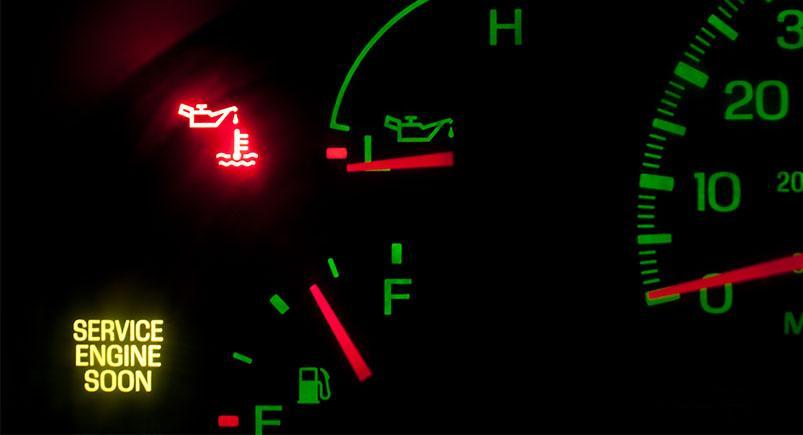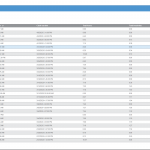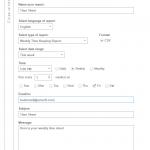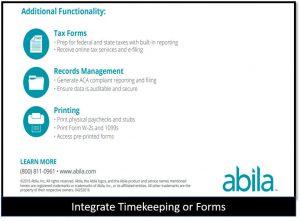
The check-engine light is probably most drivers’ least favorite feature, signaling not only problems with your vehicle but money, time, and potential headaches down the road. While it’s tempting to ignore it for a few days or even weeks, experts warn that failing to address the light can make problems more costly and even hazardous. Also known as the Malfunction Indicator Lamp (MIL), the light is triggered by your car’s engine computer. The problem is it doesn’t actually tell you what is wrong, just that something is wrong.
Decoding the Signal
Since 1996, automakers have standardized the check-engine codes under a protocol called OBD-II, mandating that cars are equipped with a universal connector to communicate these codes. Usually located under the steering column, this connector is easy to use and access. Nowadays you can purchase an inexpensive code reader but you still have to decipher it.
Actsoft has a convenient solution for drivers and fleet managers: Our GPS Tracking solution has a code reading capability that will alert you in real-time. This information is invaluable when managing several vehicles because drivers and fleet managers now have the chance to make informed decisions on whether a driver can continue on his route or if the vehicle needs immediate attention.
Common Codes and What They Cost (and Save) You
According to Edmund’s, an automotive research center, the five most common reasons for the check engine light to come on are:
- Faulty oxygen sensor (part of the emissions system, monitoring and helping adjust the air-fuel mixture)
- Catalytic converter
- Ignition coil and spark plugs
- Loose gas cap
- Mass air flow sensor (monitoring the amount of air mixed in the fuel injection system)
The oxygen sensor, which monitors the amount of unburned oxygen in the exhaust and tells your car’s computer when there is either too much, or not enough fuel, is a common problem among vehicles. This repair can cost an average of $258, according to CarMD. However, it can save hundreds or even thousands in the long run since a faulty sensor can reduce gas mileage by a whopping 40 percent. The same is true for the mass air flow sensor, which calculates the amount of air coming into the car and determines how much fuel to shoot into the engine. CarMD reports that when this malfunctions, it can drop fuel efficiency by 10–25 percent which, over time, will cost you much more than the $378 (on average) it costs to fix right away.
While your check engine light may just be screaming for a new spark plug, don’t be one of the nine million drivers who have a habit of ignoring their lights for three months or more.
Have any questions on how Actsoft can help you?
Share this post:
About the author : Actsoft Team
Actsoft’s team of industry experts have their fingers on the business world’s pulse. It’s our mission to deliver the latest news to keep you and your leaders on top of the latest trends, further helping you to excel and exceed your goals.

















 Encore & Geotab Drive
Encore & Geotab Drive



























 Gain even greater insight into the daily activities of your fleet using the combination of Geotab and Actsoft. Geotab devices provide detailed data collection and seamless integration with our solutions; learn more about the ways your vehicles are being used daily with the power of this tandem.
Gain even greater insight into the daily activities of your fleet using the combination of Geotab and Actsoft. Geotab devices provide detailed data collection and seamless integration with our solutions; learn more about the ways your vehicles are being used daily with the power of this tandem.



 Actsoft partnered with Odin to provide our solutions overseas, through payment processing integrations. Odin helps us support user management for our software; customers can also purchase our products through Odin’s billing platform.
Actsoft partnered with Odin to provide our solutions overseas, through payment processing integrations. Odin helps us support user management for our software; customers can also purchase our products through Odin’s billing platform.

 VisTracks powers our Electronic Logging Device (ELD) solution, which enables transportation businesses to easily automate their hours of service logs, remain in governmental compliance, and reduce their potential to incur costly fines.
VisTracks powers our Electronic Logging Device (ELD) solution, which enables transportation businesses to easily automate their hours of service logs, remain in governmental compliance, and reduce their potential to incur costly fines. Integration between Actsoft solutions and BeWhere’s software products is available. Take your team’s asset tracking, cellular data connectivity, and field insight a step further with effective, cross-application compatibility.
Integration between Actsoft solutions and BeWhere’s software products is available. Take your team’s asset tracking, cellular data connectivity, and field insight a step further with effective, cross-application compatibility.
 CalAmp tracking devices for vehicles and assets alike are compatible with Actsoft solutions, making it easy for you to efficiently monitor your equipment and fleet cars. Help your team enhance accountability, safety, and savings through a combination of easily installed hardware and intuitive software.
CalAmp tracking devices for vehicles and assets alike are compatible with Actsoft solutions, making it easy for you to efficiently monitor your equipment and fleet cars. Help your team enhance accountability, safety, and savings through a combination of easily installed hardware and intuitive software. Our partnership with Uniden is ideal for companies looking to gain advanced diagnostics on their fleets. Uniden’s extensive product listing of car electronics like radios, dash cams, radar detectors, and in-vehicle communicators work in concert with Actsoft’s solutions to better connect your vehicles to the company headquarters.
Our partnership with Uniden is ideal for companies looking to gain advanced diagnostics on their fleets. Uniden’s extensive product listing of car electronics like radios, dash cams, radar detectors, and in-vehicle communicators work in concert with Actsoft’s solutions to better connect your vehicles to the company headquarters. Kyocera offers a wide range of mobile devices, ranging in design from traditional phones to ultra-durable handset technology. Actsoft is able to equip organizations in a variety of different industries with solutions for improved business, while Kyocera supplies the technology they can flawlessly operate on.
Kyocera offers a wide range of mobile devices, ranging in design from traditional phones to ultra-durable handset technology. Actsoft is able to equip organizations in a variety of different industries with solutions for improved business, while Kyocera supplies the technology they can flawlessly operate on.

 Our software is the perfect complement to Apple’s user-friendly technology. Equip your workforce with the devices and solutions it needs for optimized productivity during daily operations with Apple and Actsoft.
Our software is the perfect complement to Apple’s user-friendly technology. Equip your workforce with the devices and solutions it needs for optimized productivity during daily operations with Apple and Actsoft.
 Actsoft and Sanyo teamed up to merge intuitive business management software with the technology of today. This partnership allows us to provide you with all the tools your team needs for improved workflows, better coordination, and optimized productivity.
Actsoft and Sanyo teamed up to merge intuitive business management software with the technology of today. This partnership allows us to provide you with all the tools your team needs for improved workflows, better coordination, and optimized productivity. Motorola’s mobile technology works in tandem with our solutions to provide extra versatility to your business practices. Coupled with our software’s features, Motorola’s reliable devices make connecting your workforce simpler than ever to do.
Motorola’s mobile technology works in tandem with our solutions to provide extra versatility to your business practices. Coupled with our software’s features, Motorola’s reliable devices make connecting your workforce simpler than ever to do. We’re able to bundle certain solutions of ours (including our Electronic Visit Verification options) with Samsung devices to help your team achieve as much functionality as possible, while keeping rates affordable. Use these combinations for accurate recordkeeping, improved communication, and smarter data collection in the field.
We’re able to bundle certain solutions of ours (including our Electronic Visit Verification options) with Samsung devices to help your team achieve as much functionality as possible, while keeping rates affordable. Use these combinations for accurate recordkeeping, improved communication, and smarter data collection in the field.